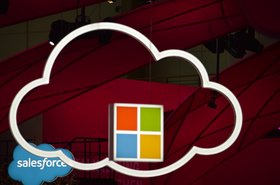Many organizations today are implementing digital transformation and modernization strategies that center on running applications in the cloud. According to one survey, nearly 85 percent are opting to build entirely new applications with cloud-native technologies to take full advantage of the services offered by public cloud providers such as Microsoft Azure.
However, for the many organizations with existing on-premises data centers, the question of what to do with legacy applications – and the data they hold – creates a dilemma. What’s the best way to capture the value of the data in these systems?
There are a number of potential avenues. Industry analyst Gartner has outlined 7 possible options for modernizing legacy systems, each with its benefits and drawbacks in terms of cost and complexity. The simplest option is to leave applications and data in place and use APIs to make data and functions available as services. However, this approach can be limiting. To realize the full potential of legacy data, organizations should seriously consider moving legacy applications to the cloud; while there are potential obstacles, the benefits to a modernization program will be well worth the effort.
Still, some organizations may balk at shifting legacy workloads to the cloud. There are several reasons why:
Drawbacks to moving
- The sheer volume of the data involved
Massive datasets can be difficult to migrate to the cloud. It would be impractical if not impossible for organizations with multi-terabyte or even petabyte datasets to migrate them to the cloud over even the fastest and widest networking connections. Even when it is possible, hosting providers can charge a premium for such large data transfers. As a result, data must often be copied onto physical media and delivered to the hosting provider, which can raise concerns about security, loss or damage. However, there are dedicated services offered by some platform providers that make this process simple, secure and fast.
- Lack of institutional knowledge about legacy workloads
In many cases, business-critical workloads have been developed and refined over decades for platforms such as the IBM AS/400 or IBM Power. While they may still work well, they can be a “black box” to current developers who “inherit” responsibility for them.
- Fear of breaking applications that are working well
Given the essential nature of many of these legacy applications, many organizations don’t want to risk the potential disruption that could come with migrating them.
- Concerns over compliance
Several countries have implemented data governance and privacy laws that dictate where and how data generated locally can be stored or whether it can be moved across borders.
Benefits of moving
While understandable, the above concerns can be easily outweighed by the short- and long-term benefits of free data from legacy applications. These include:
- Better integration with newer cloud-hosted data
Moving legacy data to the cloud so that it is “closer” to more recently generated data simplifies integration and improves response time performance, especially for larger data sets.
- Better tools for governance
Microsoft Azure and other cloud platform providers offer useful tools to manage data that could make it easier to comply with national data governance and privacy laws. For example, Azure Purview and Azure Information Protection (AIP) make it possible to automatically apply policies to data as it enters the system. Automated governance and compliance policies can also improve an organization's overall data security posture.
- Cloud native services
Moving legacy data from on-prem to the cloud opens up the possibilities of using advanced services offered by cloud platform providers. This can include advanced analytics, business intelligence and even AI/ML solutions.
- An opportunity to reduce unnecessary data
Organizations have a tendency to hoard data over time. But portions of that data often lose relevance or no longer have a purpose. Migration creates an opportunity to reevaluate, inventory and potentially pare down legacy data stores. It’s also important to note that by deleting unnecessary (but still potentially sensitive) data, organizations can reduce their exposure and minimize the risk of data theft or loss.
Extracting value from assets
Even as organizations race to adopt the cloud, those with legacy applications and data will need to adopt a proactive strategy for extracting value from those assets. Fortunately, there are solutions that make migrating applications and data to the cloud far less onerous. In Gartner’s parlance, these solutions make it relatively simple to re-host environments and workloads to Azure and other public cloud providers with minimal changes. Once migrated, legacy applications and their data can be more easily integrated with cloud-native applications, or extended with new services. Either of these options can create new value from legacy applications and data.





